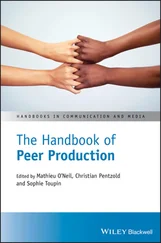The diversity of acoustic constituents of speech is readily resolved as a coherent stream perceptually, though the means by which this occurs challenges the potential of the generic auditory account. Although some computational implementations of gestalt grouping have disentangled spoken sources of simple nonstationary spectra (Parsons, 1976; Summerfield, 1992), these have occurred for a signal free of discontinuities, as occurs in the production of sustained, slowly changing vowels. Slow and sustained change in the spectrum, though, is hardly typical of ordinary speech, which is characterized by consonant closures that impose rapid spectral changes and episodes of silence of varying duration. To resolve a signal despite silent discontinuities requires grouping by closure to extrapolate across brief silent gaps. To invoke generic auditory properties in providing this function would oppose present evidence, though. For example, in an empirical attempt to discover the standard for grouping by closure (Neff, Jestead, & Brown, 1982), the temporal threshold for gap detection was found to diverge from the tolerance of discontinuity in grouping. On such evidence, it is unlikely that a generic mechanism of extrapolation across gaps is responsible for the establishment of perceptual continuity, whether in auditory form or in the perception of speech.
Evidence from tests of auditory form suggests that harmonic relations and amplitude comodulation promote grouping, albeit weakly (Bregman, Levitan, & Liao, 1990). That is, sharing a fundamental frequency or pulsing at a common rate promote auditory integration. These two characteristics are manifest by oral and nasal resonances and by voiced frication. This may be the most promising principle to explain the coherence of voiced speech by generic auditory means, for an appeal to similarity in frequency variation between the formants is unlikely to explain their coherence. Indeed, the pattern of frequency variation of the first formant typically differs from that of the second, and neither first nor second resemble the third, due to the different articulatory origins of each (Fant, 1960). To greatly simplify a complex relation, the center frequency of the first formant often varies with the opening and closing of the jaw, while the frequency of the second formant varies with the advancement and retraction of the tongue, and the frequency of the third formant alternates in its articulatory correlate. Accordingly, different patterns of frequency variation are observed in each resonance due to the relative independence of the control of these articulators (see Figure 1.2). Even were generic auditory functions to bind the comodulated formants into a single stream, without additional principles of perceptual organization a generic gestalt‐derived parsing mechanism that aims to compose perceptual streams of similar auditory elements would fail; indeed, it would fracture the acoustically diverse components of a single speech signal into streams of similar elements, one of hisses, another of buzzes, a third of clicks, and so on, deriving an incoherent profusion of streams despite the common origin of the acoustic elements in phonologically governed sound production (Lackner & Goldstein, 1974; Darwin & Gardner, 1986; Remez et al., 1994). Apart from this consideration in principle, a small empirical literature exists on which to base an adequate account of the perceptual organization of speech.
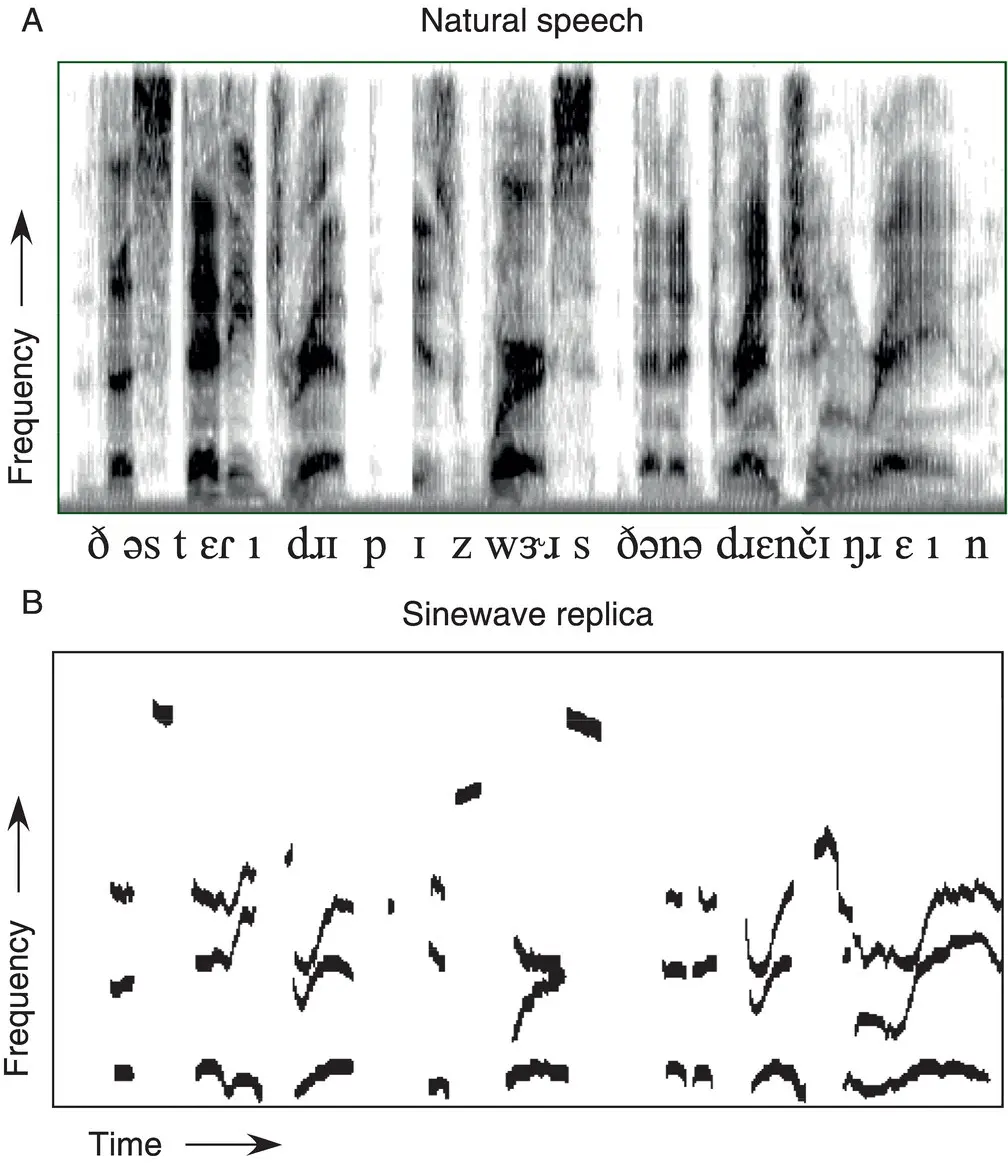
Figure 1.2 A comparison of natural and sinewave versions of the sentence “The steady drip is worse than a drenching rain”: (A) natural speech; (B) sinewave replica.
In measures 13–26 of the first movement of Schubert’s Symphony no. 8 in B minor (D. 759, the “Unfinished”), the parts played by oboe and clarinet, a unison melody, fuse so thoroughly that no trace of oboe or clarinet quality remains. This instance in which two sources of sound are treated perceptually as one led Broadbent and Ladefoged (1957) to attempt a study that offered a clue to the nature of the perceptual organization of speech. Beginning with a synthetic sentence composed of two formants, they created two single formant patterns, one of the first formant and the other of the second, each excited at the same fundamental frequency. Concurrently, the two formants evoked an impression of an English sentence; singly, each evoked an impression of an unintelligible buzz.
In one test condition, the formants were presented dichotically, in analogy to an oboe and a clarinet playing in unison. This resulted in perception of a single voice speaking the sentence, as if two spatially distinct sources had combined. Despite the dissimilarities in spatial locus of the components, this outcome is consistent with a generic auditory account of organization on grounds of harmonicity and amplitude comodulation. However, when each formant was rung on a different fundamental, subjects no longer reported a single voice, as if fusion failed to occur because neither harmonicity nor amplitude comodulation existed to oppose the spatial dissimilarity of the components. It is remarkable, nonetheless, that in view of these multiple breaches of similarity, subjects accurately reported the sentence “What did you say before that?” although in this condition it seemed to be spoken by two talkers, one at each ear, each speaking at a different pitch. In other words, listeners reported divergent perceptual states: (1) the splitting of the auditory streams due to dissimilar pitch; and (2) the combining of auditory streams to form speech. Although a generic gestalt‐derived account can explain a portion of the results, it cannot explain the combination of spatially and spectrally dissimilar formant patterns to compose a single speech stream.
In fine detail, research on perception in a speech mode also raised this topic, though indirectly. This line of research sought to calibrate the difference in the resolution of auditory form and phonetic form of speech, thereby to identify psychoacoustic and psychophysical characteristics that are unique to speech perception. By opposing acoustic patterns evoking speech perception with nonspeech control patterns, the perceptual effect of variation in an acoustic correlate of a phonetic contrast was compared to the corresponding effect of the same acoustic property removed from the phonetically adequate context. For instance, Mattingly et al. (1971) examined the discriminability of a second formant frequency transition as an isolated acoustic pattern and within a synthetic syllable in which its variation was correlated with the perception of the place of articulation of a stop consonant. A finding of different psychophysical effect, roughly, Weber’s law for auditory form and categorical perception for phonetic form, was taken as the signature of each perceptual mode. In a variant of the method specifically pertinent to the description of perceptual organization, Rand (1974) separated the second formant frequency transition, the correlate of the place contrast, from the remainder of a synthetic syllable and arrayed the acoustic components dichotically. In consequence, the critical second formant frequency transition presented to one ear was resolved as an auditory form while it also contributed to the phonetic contrast it evoked in apparent combination with the formant pattern presented to the other ear. In other words, with no change in the acoustic conditions, a listener could resolve the properties of the auditory form of the formant‐frequency transition or the phonetic contrast it evoked when combined with the rest of the synthetic acoustic pattern. The dichotic presentation permitted two perceptual organizations of the same element concurrently, due to the spatial and temporal disparity that blocked fusion on generic auditory principles, and due to the phonetic potential of the fused components.
Читать дальше
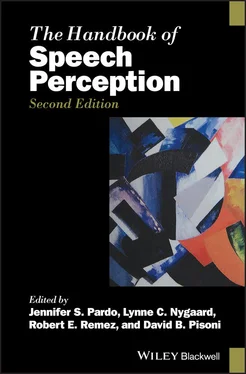


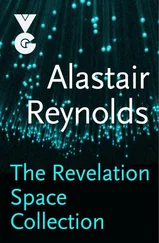



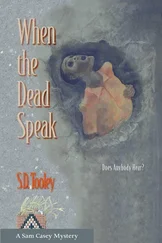

![О Генри - Справочник Гименея [The Handbook of Hymen]](/books/407356/o-genri-spravochnik-gimeneya-the-handbook-of-hymen-thumb.webp)



